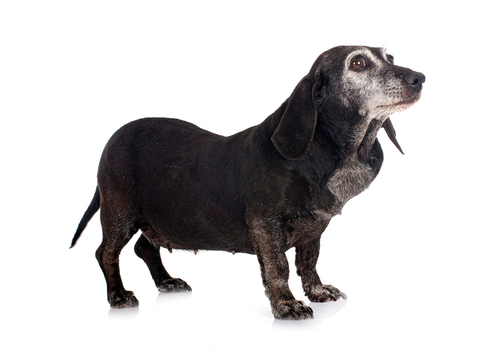
A Multi-disciplinary Approach to Investigating Canine Diffuse Large B cell Lymphoma
We propose to better define genetic subtypes of canine lymphoma and characterising response to treatment of the different subtypes through a combination of more accurate phenotyping of lymphomas by integrating a) advanced image analysis b) genome sequencing, and c) total RNA sequencing (including micro-RNA sequencing).

Challenge
Diffuse large B‐cell lymphoma (DLBCL) represents the most common form of lymphoma in dogs (48%) and humans (40%) with an aggressive clinical course. With chemotherapy, there is a cure rate of around 58% in humans, whereas in dogs the best remission responses are up to 36 months. Diagnosis and typing of lymphoma can be challenging for pathologists due to the overlap in appearance of neoplastic lymphocytes and normal lymphocytes, and complex classification of 20 subtypes. Simplistically it is subtyped into diffuse or nodular architecture, small or large nuclear size, and graded by mitotic rate. DLBCL can be further subtyped by appearance into centroblastic and immunoblastic based on nuclear features, and this has been found to strongly predict outcome in human medicine. Immunophenotype is established through immunohistochemical staining.
Solution
In humans, DLBCL has been shown to demonstrate genetic heterogeneity and miRNA profiles predicting disease prognosis. In dogs there are limited studies and relatively little genetic characterisation of lymphoma, meaning that it is difficult to find correlation with the human disease. Nevertheless, in both humans and dogs, there is a significant subset of lymphomas that are refractory to treatment.
Impact
Canine lymphoma can be more accurately diagnosed, treated and prognosticated through a synergistic molecular, genetics, and image based analysis.
Partners
In this project we are working closely with Dr Sophie LeCalvez of IDEXX laboratories who are also funding this project
Quote
With the generous funding from LIDO and IDEXX for this PhD studentship, we are hoping to further our understanding of this highly complex disease, through taking advantage of, and integrating advances in pathology imaging technology, deep learning and genomics.
Publications
| Title | Publication | Year |
| DLBCL-Morph: Morphological features computed using deep learning for an annotated digital DLBCL image set | Sci Data | 2021 |
| The Genetic and Molecular Basis for Canine Models of Human Leukemia and Lymphoma. | Front Oncol. | 2020 |
| A Multiprotein Supercomplex Controlling Oncogenic Signaling in Lymphoma. | Nature | 2018 |
| Targeting NEDD8-activating enzyme is a new approach to treat canine diffuse large B-cell lymphoma.? | Vet Comp Oncol. | 2018 |
| STAT3 Expression and Activity are Up-Regulated in Diffuse Large B Cell Lymphoma of Dogs | J Vet Intern Med | 2017 |
| Man’s best friend: what can pet dogs teach us about non-Hodgkin lymphoma? | Immunol Rev. | 2015 |
